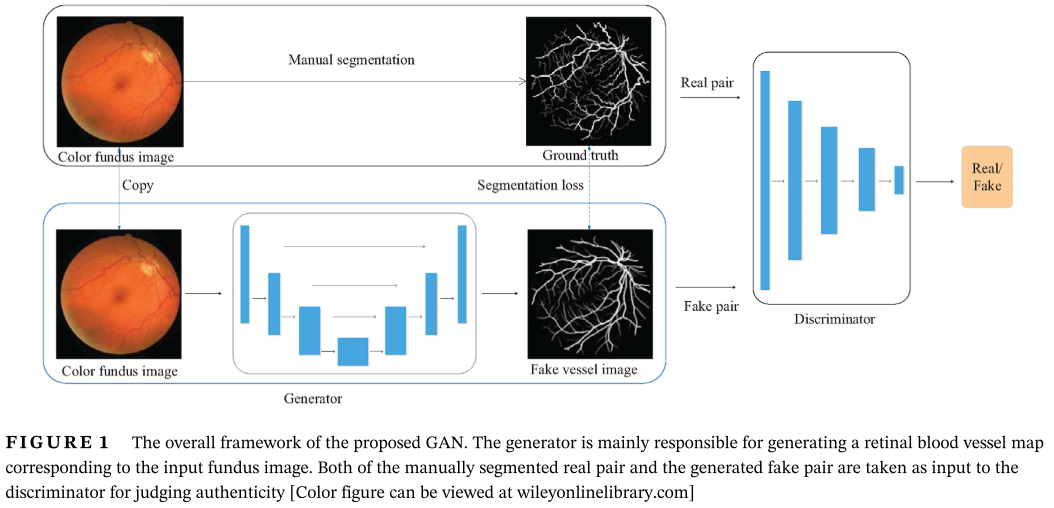High‐quality retinal vessel segmentation using generative adversarial network with a large receptive field
Published in International Journal of Imaging Systems and Technology, 2020, 30(3): 828-842, 2020
Hanli Zhao, Xiaqing Qiu, Wanglong Lu, Hui Huang, Xiaogang Jin.

Abstract:
Retinal vessel segmentation is of great significance for assisting doctors in diagnosis of ophthalmological diseases such as diabetic retinopathy, macular degeneration and glaucoma. This article proposes a new retinal vessel segmentation algorithm using generative adversarial learning with a large receptive field. A generative network maps an input retinal fundus image to a realistic vessel image while a discriminative network differentiates between images drawn from the database and the generative network. Firstly, the proposed generative network combines shallow features with the upsampled deep features to assemble a more precise vessel image. Secondly, the residual module in the proposed generative and discriminative networks can effectively help deep nets easy to optimize. Moreover, the dilated convolutions in the proposed generative network effectively enlarge the receptive field without increasing the amount of computations. A number of experiments are conducted on two publicly available datasets (DRIVE and STARE) achieving the segmentation accuracy rates of 95.63% and 96.84%, and the average areas under the ROC curve of 98.12% and 98.53%. Performance results show that the proposed automatic retinal vessel segmentation algorithm outperforms state-of-the-art algorithms in many validation metrics. The proposed algorithm can not only detect small tiny blood vessels but also capture large-scale high-level semantic vessel features.
Recommended citation:
Hanli Zhao, Xiaqing Qiu, Wanglong Lu, Hui Huang, Xiaogang Jin. High‐quality retinal vessel segmentation using generative adversarial network with a large receptive field[J]. International Journal of Imaging Systems and Technology, 2020, 30(3): 828-842.
